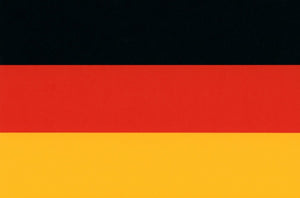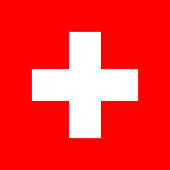Have you ever wondered about the mysteries encoded in clothing labels, right? All those washing symbols can sometimes be confusing. And then, when you finally decide on a program, you start to wonder if you really made the right choice and if your favorite clothes won't suddenly change size, shrinking by 2 sizes.
Don't worry, you're not alone. What may be a puzzle for some will become child's play with us. That's why the experts at Rotho decided to create a guide for you that will decode all those enigmatic washing symbols. From now on, these little symbols will no longer be a challenge for you, and the washing machine will become your ally.
Labels – where are the symbols on clothing?
You take the clothes out of the laundry basket and what next? Which washing program will be suitable for delicate fabrics and can all items be washed at normal temperature? If you have doubts about how to read the symbols, we have good news for you. Shrunk t-shirts, faded clothes, felted sweaters are a thing of the past. From now on, all your clothes will be safe, and your favorite wardrobe will serve you for years. But where to find the right tips on how to do laundry? The answer is simple - just look at the white label placed inside the garment.
Labels on clothes are usually found on the left side of the garments. In the case of t-shirts and shirts, at the back of the collar or along the side seam. For pants, near the waistband. That’s where the information about the material and washing and drying recommendations are hidden, which will allow you to enjoy the impeccable appearance of your clothes even after many washes.
The most commonly encountered laundry symbols
It is important to remember that the symbols on care labels are recommendations from the manufacturer aimed at maintaining the quality of the garments. Therefore, it is worth treating them as a starting point for proper clothing care. As a result, taking care of clothes according to the labels brings benefits in the form of longer lifespan and maintaining an attractive appearance.
Washing symbolsIn the case of laundry symbols, we can talk about two types. The first one concerns washing at home. It can be either hand washing or washing in a washing machine. A characteristic element of laundry symbols is a basin. If it is not crossed out, we can freely wash our clothes. However, it is often supplemented with additional symbols. Typical ones are dots in the basin or temperature indications. Both indicate the same thing - the maximum washing temperature.
In the case of laundry symbols, we can talk about two types. The first one concerns washing at home. It can be either hand washing or washing in a washing machine. A characteristic element of laundry symbols is a basin. If it is not crossed out, we can freely wash our clothes. However, it is often supplemented with additional symbols. Typical ones are dots in the basin or temperature indications. Both indicate the same thing - the maximum washing temperature.
Washing symbols:
- bowl with water - can be washed
- crossed-out bowl with water - do not wash
- highlighted bowl with water - wash gently
- double underlined bowl with water - wash very gently
- a bowl with a dot or the marking 30℃ - both markings on the labels mean the same - wash at 30 degrees Celsius
- bowl with two dots - means exactly the same as a bowl with the symbol 40℃ - should be washed at 40 degrees
- bowl with 3 dots - the 3 dots in the middle of the bowl correspond to the marking 60℃
- 4 dots in the bowl - this is equivalent to washing at 90℃
- bowl with hand - wash by hand
Chemical cleaning markingsSometimes the type of dirt or the material from which our clothes are made requires dry cleaning. The dry cleaning symbols are marked with an empty circle. What is dry cleaning?
Unlike traditional washing at home, dry cleaning involves a process without the use of water. The entire procedure takes place thanks to special machines, namely chemical aggregates. During this process, the clothing is placed in the tank of these devices along with the appropriate solvent. Next comes the stage of cleaning and drying the garment.
Sometimes the type of dirt or the material from which our clothes are made requires dry cleaning. The dry cleaning symbols are marked with an empty circle. What is dry cleaning?
Unlike traditional washing at home, dry cleaning involves a process without the use of water. The entire procedure takes place thanks to special machines, namely chemical aggregates. During this process, the clothing is placed in the tank of these devices along with the appropriate solvent. Next comes the stage of cleaning and drying the garment.
Round symbols on the label - Dry cleaning symbols:
- empty circle - can be cleaned chemically
- crossed-out circle - no chemical cleaning
- circle with the letter A - to be cleaned in all types of chemical solvents.
- circle with the letter P - clean dry without using solvents
- circle with the letter F - clean dry in a solution of fluoride carbonate or gasoline
- circle with the letter W - clean wet
Drying symbolsModern tumble dryers are true marvels of technology, full of intelligent solutions that take care of even the most delicate materials. Home scents for the dryer ensure that you take out not only dry but also perfumed clothing. However, not all clothes go through this process with pleasure. Why? Because hot air and drum rotations can unfortunately damage the structure of the fabric fibers. Old dryers often also lack those magical moisture sensors that help precisely adjust the drying time. As a result, drying clothes in such appliances can accelerate their wear and tear.
Modern tumble dryers are true marvels of technology, full of intelligent solutions that take care of even the most delicate materials. Home scents for the dryer ensure that you take out not only dry but also perfumed clothing. However, not all clothes go through this process with pleasure. Why? Because hot air and drum rotations can unfortunately damage the structure of the fabric fibers. Old dryers often also lack those magical moisture sensors that help precisely adjust the drying time. As a result, drying clothes in such appliances can accelerate their wear and tear.
Labels regarding drying
- empty square or crossed-out square - drying in the dryer is prohibited
- square with a circle in the middle - can be dried in a drum dryer
- square with a circle and a dot in the middle - dry at low temperature
- square with a horizontal line - dry in a horizontal position
- square with two vertical lines - dry in an upright position
- square and two diagonal lines in the corner - dry in the shade
Ironing symbolsA shirt that is perfectly ironed looks much more elegant on the body. Additionally, sinking into freshly ironed bedding becomes much more pleasant after a long day at work, and ironing children's clothes is recommended for hygiene reasons. However, how should you properly iron different types of fabrics? The symbols on the labels in the shape of an iron are the right guideline.
A shirt that is perfectly ironed looks much more elegant on the body. Additionally, sinking into freshly ironed bedding becomes much more pleasant after a long day at work, and ironing children's clothes is recommended for hygiene reasons. However, how should you properly iron different types of fabrics? The symbols on the labels in the shape of an iron are the right guideline.
Ironing symbols
- iron symbol with one dot in the middle - iron at a temperature of 110℃
- iron symbol with two dots - iron at a temperature of 150℃
- iron symbol with three dots - iron at a temperature of 200℃
- crossed-out iron symbol - do not iron
- highlighted iron symbol - iron through a protective fabric
- crossed-out symbol of an iron with steam below - do not use steam iron
Symbols related to clothing bleaching
Sometimes it happens that our clothes take on shades of yellow, gray, or develop difficult-to-remove stains. Yellow stains under the armpits or sweat stains are not attractive at all. White materials easily absorb all kinds of dirt and are susceptible to air pollution. So how can we safely bleach and restore shine even to delicate fabrics?
Triangular symbols on labels - bleaching clothes:
- empty triangle - can be bleached
- crossed triangle - do not bleach or chlorinate
- triangle with two parallel lines - use oxygen bleaches
- triangle with the CL sign - chlorination is possible
What to do when the clothing has no label?
It is definitely worth reading the labels, but what if a given piece of clothing or material does not have a tag? At what temperature should we wash our dirty clothes to remove unsightly stains without negatively affecting their lifespan?
In a washing machine at 95°C, you can safely wash diapers, towels, white linen, and white cotton. For high temperatures, it is also recommended to wash the bedding and pajamas of sick individuals. If you are dealing with colored cotton or linen fabrics, such as bedding, tablecloths, t-shirts, pants, socks, and jeans, a temperature of 60°C–40°C is appropriate. However, remember that jeans can bleed, so it is advisable to wash them separately.
How to wash sports clothes? Sportswear, compression clothing, and those containing membranes should usually be washed by hand. Alternatively, we can set the washing machine to a delicate or hand wash program, but skip the spin cycle. Unfortunately, blends of natural and synthetic fibers used in sports clothing do not tolerate spinning and wringing well.
White polyester cotton is simplified at 60ºC, while colored at 50ºC. If you are dealing with delicate materials, such as dresses, thin blouses, shirts, fabrics covered with a protective layer, washing at 40°C–30°C is recommended. Curtains and delicate lingerie (silk or lace) can also be washed at low temperatures. As for wool and silk, they are suitable for washing at 30ºC.
When throwing a bra into the washing machine, it is worth placing it in a fabric mesh or a small pillowcase to prevent the straps, elastics, and delicate parts of the lingerie from stretching. Now you know what temperatures to choose for different types of fabrics!
The key to the longevity of your clothes - how to recognize the symbols on the labels?
We hope that now you know where the symbols on clothing are located and how to interpret them. From now on, the washing, dry cleaning, drying, ironing, and bleaching labels on clothing should no longer be a mystery to you.
FAQ - Most popular questions and answers
What do the washing symbols mean?Washing symbols on clothing labels, also known as laundry care symbols on garment labels, indicate the recommended washing temperature, the possibility of using a tumble dryer, or the degree of caution during ironing. Each washing symbol provides specific information. They often consist of geometric shapes, lines, and dots.
What does the symbol for not washing in a washing machine look like?The symbol for no washing is a crossed-out bowl of water. Clothes that have this prohibition on the label can only be dry cleaned. Such items should not be put in the washing machine, washed by hand, or soaked, as this may cause permanent stains or changes in the shape of the garment.
Washing symbols on clothing labels, also known as laundry care symbols on garment labels, indicate the recommended washing temperature, the possibility of using a tumble dryer, or the degree of caution during ironing. Each washing symbol provides specific information. They often consist of geometric shapes, lines, and dots.
The symbol for no washing is a crossed-out bowl of water. Clothes that have this prohibition on the label can only be dry cleaned. Such items should not be put in the washing machine, washed by hand, or soaked, as this may cause permanent stains or changes in the shape of the garment.
What does the crossed-out circle on the label mean?The circle on the label indicates the possibility of dry cleaning. A crossed-out circle means that the material cannot be dry cleaned. The manufacturer indicates in this way that most powders and substances used in professional dry cleaning can damage the fabric.
What do the dots on the iron mean?The iron's label indicates the possibility of ironing. The number of dots indicates the maximum temperature. One dot means 110℃, two dots 150℃, three dots 200℃. Some delicate fabrics do not tolerate treatment with a hot iron well.
The circle on the label indicates the possibility of dry cleaning. A crossed-out circle means that the material cannot be dry cleaned. The manufacturer indicates in this way that most powders and substances used in professional dry cleaning can damage the fabric.
The iron's label indicates the possibility of ironing. The number of dots indicates the maximum temperature. One dot means 110℃, two dots 150℃, three dots 200℃. Some delicate fabrics do not tolerate treatment with a hot iron well.








